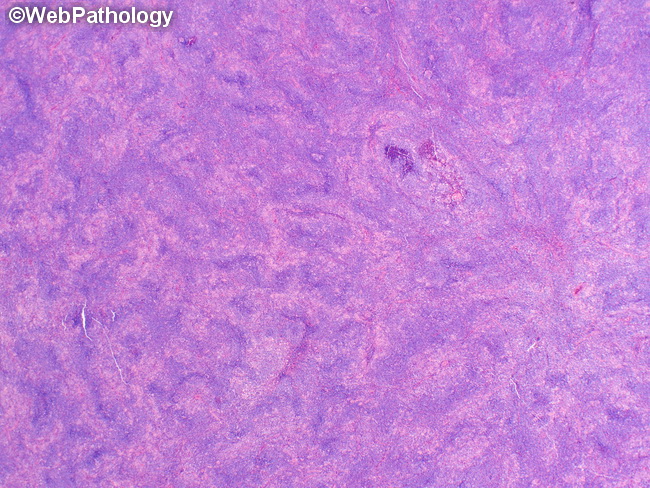NLPHL : Architectural Patterns


Comments:
Nodular lymphocyte-predominant Hodgkin lymphoma (NLPHL). The lymph node architecture is partially or totally effaced by one of the six architectural patterns (termed A-F) described by Fan et al (See Ref) which are best visualized with CD20 immunostain. A) classic B-cell rich nodular; B) serpiginous nodular (shown here); C) nodular with prominent extranodular lymphocyte-predominant (LP) cells; D) T-cell rich nodular; E) diffuse T-cell/histiocyte-rich large B-cell lymphoma-like; and F) diffuse with a B-cell rich pattern. Patterns A and B are most common (about 75% of cases) and considered typical. Patterns C-F are less common and considered variant patterns. Most cases show an admixture of patterns rather than a single, pure pattern. Due to its low frequency and morphologic heterogeneity, NLPHL is frequently misdiagnosed. The T-cell rich forms are often mistaken for T-cell lymphomas. The histologic pattern, especially if it is one of the variants (C-F), should be noted in the report. This image shows serpiginous nodular architecture (Pattern B) and consists of interconnected aggregates of reactive B lymphocytes (see CD20 in the next image). Reference:Fan Z, Natkunam Y, Bair E, et al. Characterization of variant patterns of nodular lymphocyte predominant Hodgkin lymphoma with immunohistologic and clinical correlation. Am J Surg Pathol 2003; 27:1346-56.



